Why take the next step to actually advertise on Twitter when we have Facebook and its little sibling, Instagram, in our repository?
Because Twitter is an easy-to-use platform with a fairly large user base that offers affordable ads to budget-conscious businesses.
Twitter provides a customized marketing strategy to gain brand awareness amongst unaware audiences, promote events and sales, and even gain new followers to whom you can advertise in the future.
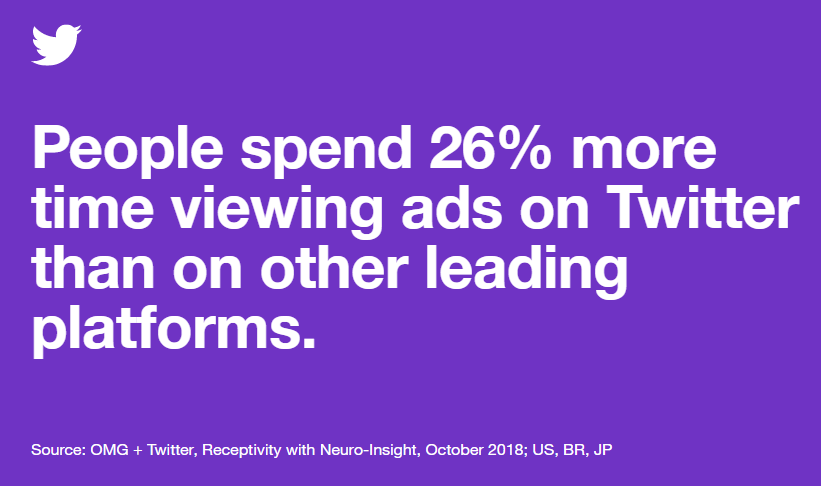
Image Source: Twitter Business
Twitter ads not just work, but they excel when it comes to conversion rate, cost per conversion, and overall cost. Here are the top reasons to go for Twitter ads.
- Twitter business accounts and personal accounts can be kept the same if you wish
- Twitter ads are ridiculously targeted
- Keyword targeting is an exciting and precise way to go after specific people who have demonstrated intent on Twitter
- Twitter ads are amazingly affordable
- You pay when your marketing objective is achieved
- Conduct your learning phase of testing Twitter ads without cost
- Low cost per click
Things move quickly on Twitter.
The shelf life of a single tweet is four times shorter than the stuff on Facebook.
If you want to understand better how Twitter ads work and want to get started in Twitter ads leeway, this post should point you in the right direction.
- Types Of Twitter Ads
- Twitter Ad Specs
- How Much Do Twitter Ads Cost?
- 9 Steps For Creating Twitter Ads That Gets Clicked
- Twitter Ads Example
- Twitter Advertising Best Practices
- How To Delete Twitter Ad Campaign?
You can directly jump to a section of your choice or keep scrolling.
Click here to download detailed infographic on steps to create Twitter ads that gets clicked.
Types Of Twitter Ads
Here are the three primary types of Twitter ads, each working towards a different goal to advocate your business on the platform. Take a look.
Types Of Twitter Ads #1: Promoted Accounts
The suggested accounts that appear under the "Who to follow" section on the left-hand side of your Twitter stream and beneath the "What's happening" section are promoted accounts. Your profile is suggested to the appropriate users in their feed, keeping in mind their interests.
Twitter suggests promoted accounts on two primary principles (there are several other factors, as well):
- The keywords users search for
- The people they follow
Goal: To help build followers
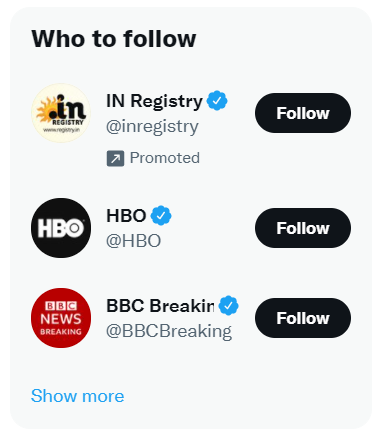
Image Source: Twitter Business
Types Of Twitter Ads #2: Promoted Tweets
The tweets of your choice are highlighted to make an important status update stand out in your audience's feed amongst a herd of tweets. Promoted tweets are viewed as expanded tweets, both on your and your follower's timeline.
Goal: To highlight essential updates, announce news and offer deals.
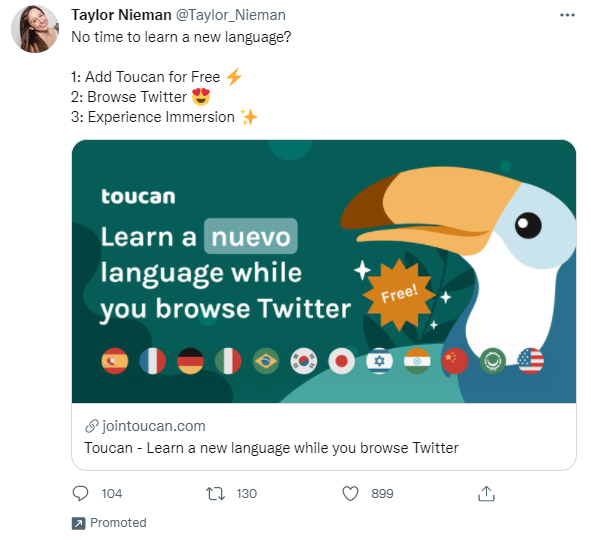
Image Source: Twitter Business
Types Of Twitter Ads #3: Promoted Trends
Twitter is well-known for creating momentous trending topics that eventually become the source of several conversations on the social network. Promoted trends appear in the "Trends for you" section, which is sponsored by advertisers.
For Twitter trends, time is the essence. Brands can promote a trend for a 24-hour-long period with promoted trends.
Promoted trends are not available to Twitter's self-serve advertisers.
Goal: Used for the purpose of branding to create awareness for events like product launch or to capitalize on the news cycle.
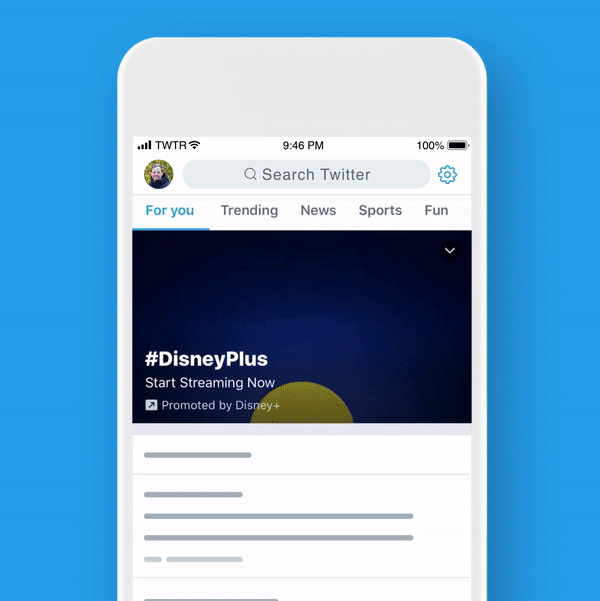
Image Source: Twitter Business
Twitter Ad Specs
Twitter ad specs trick you into formatting your ads so that it doesn't get cut out. Twitter ad specs include text, image, video carousel ad specs. Here's what you should keep in mind while making all the different types of perfect Twitter ads.
Note: When you use a link in your Twitter ad copy, the character count limit is reduced by 23 characters.
Twitter Text Ad Specs
- Tweet copy: 280 characters (257 characters with one link)

Image Source: Twitter Business
Twitter Image Ad Specs
- Tweet copy: 280 characters
- Image size: Minimum width of 600 pixels. Any height is acceptable. When height exceeds the width, it will be cropped to 1:1.
- Aspect ratio: 16:9 for mobile. Any aspect ratio between 2:1 and 1:1 is acceptable for desktop.
- File size: 20MB (maximum)
- File types: PNG and JPEG

Image Source: Twitter Business
Twitter Video Ad Specs
- Tweet copy: 280 characters
- Title length: 70 characters
- File size: 1GB (maximum), 30 MB (recommended)
- Video length: 2 minutes 20 seconds (maximum),15 seconds or less (recommended)
- File types: MP4 or MOV
- Resolution: 720x720 for square, 1280x720 for landscape
- Aspect ratio: 1:1 (recommended), any aspect between 2:1 and 1:1 is acceptable
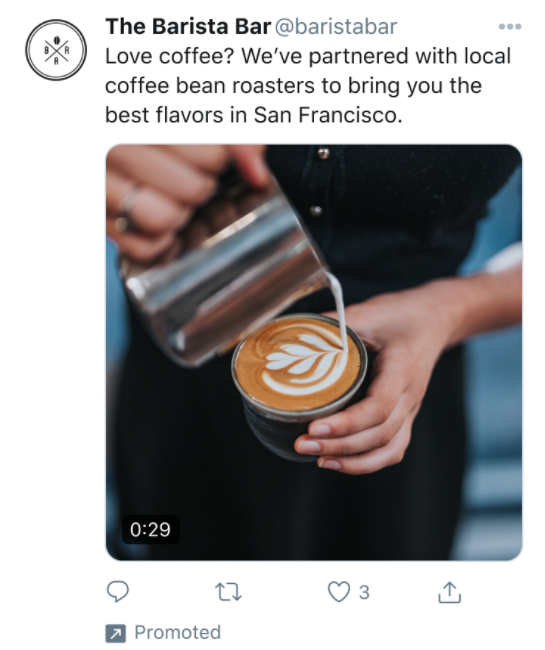
Image Source: Twitter Business
Twitter Carousel Ad Specs
- Number of slides: 2-6 (images or videos)
- Link: One web or app destination for all slides
- Aspect ratio: 1.91:1 or 1:1 for image assets
- Video carousel format: MP4 or MOV
- Video carousel aspect ratio: 1:1 or 16:9
- Video carousel length: 140 seconds (maximum), 15 seconds or less (recommended)
Note: You cannot combine aspect ratios within the same carousel.
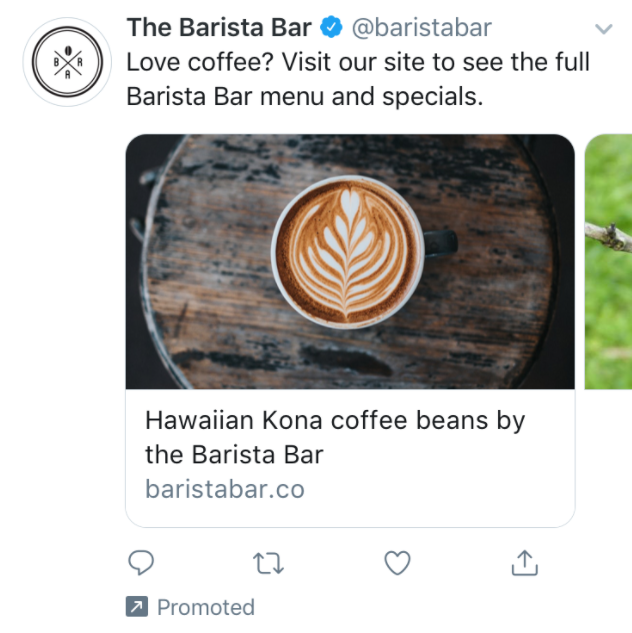
Image Source: Twitter Business
To know more details about Twitter ad specs, get Twitter’s complete guide to creative ad specs.
How Much Do Twitter Ads Cost?
There is no minimum budget required for running Twitter ads campaigns. You have complete control over how much you want to spend on your campaigns. Generally, how much you pay in your Twitter ad campaigns is set by you, but the average cost of advertising on Twitter is $0.38.
Twitter ads cost depending on the ad type is given below.
- Promoted Tweets: $0.50 to $2.00 for each action
- Promoted Accounts: $2 to $4 for each follower
- Promoted Trends: $200,000 per day
Twitter’s range of bidding options depending on the campaign objective is given below.
- Website visits campaigns: $1.68 – $10.00
- Tweet engagements campaigns: $1.50 – $2.50
- Awareness campaigns: $6.00 – $8.00
- Followers campaigns: $2.50 – $3.50
- App installs or re-engagement campaigns: $1.95 – $3.25
The six essential factors that impact your Twitter ads are
- Bidding strategy
- Ad creatives
- Target audience
- Ad format
- Ad objective
- Your competitions
Note: The targeting, creatives, and bidding strategy determine how much each billable action costs.
9 Steps For Creating Twitter Ads That Gets Clicked
Before you start creating a successful Twitter ads campaign, ensure that your account is eligible for Twitter ads. Here's a step-by-step process for creating Twitter ads that cut through the noise and get noticed.
Step 1: Create A Twitter Ads Account
Click on Twitter, and you will be directed to your Twitter timeline if you are already logged in. If not, then log in to your Twitter account or create a new one.
From the left-hand side of your timeline, click on "More." From the menu that opens up, click on "Twitter ads." Now, you are automatically brought to the Twitter Ads Manager as your home screen.

Image Source: Twitter Business
Twitter Ads Manager is a central workspace to plan, manage, and get reports on your ads campaigns.
If you are creating Twitter ads for the first time, you would be asked to enter your country and time zone. Once selected, click "Let's go."
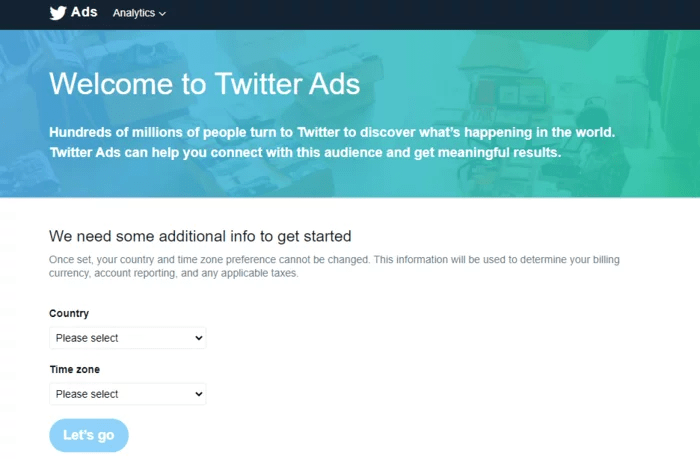
Image Source: Twitter Business
Step 2: Know Your Objective With Twitter Ads
A Twitter marketing initiative starts with knowing what you want to accomplish through your campaign. The first step in creating your Twitter ad campaign is choosing your campaign objective.
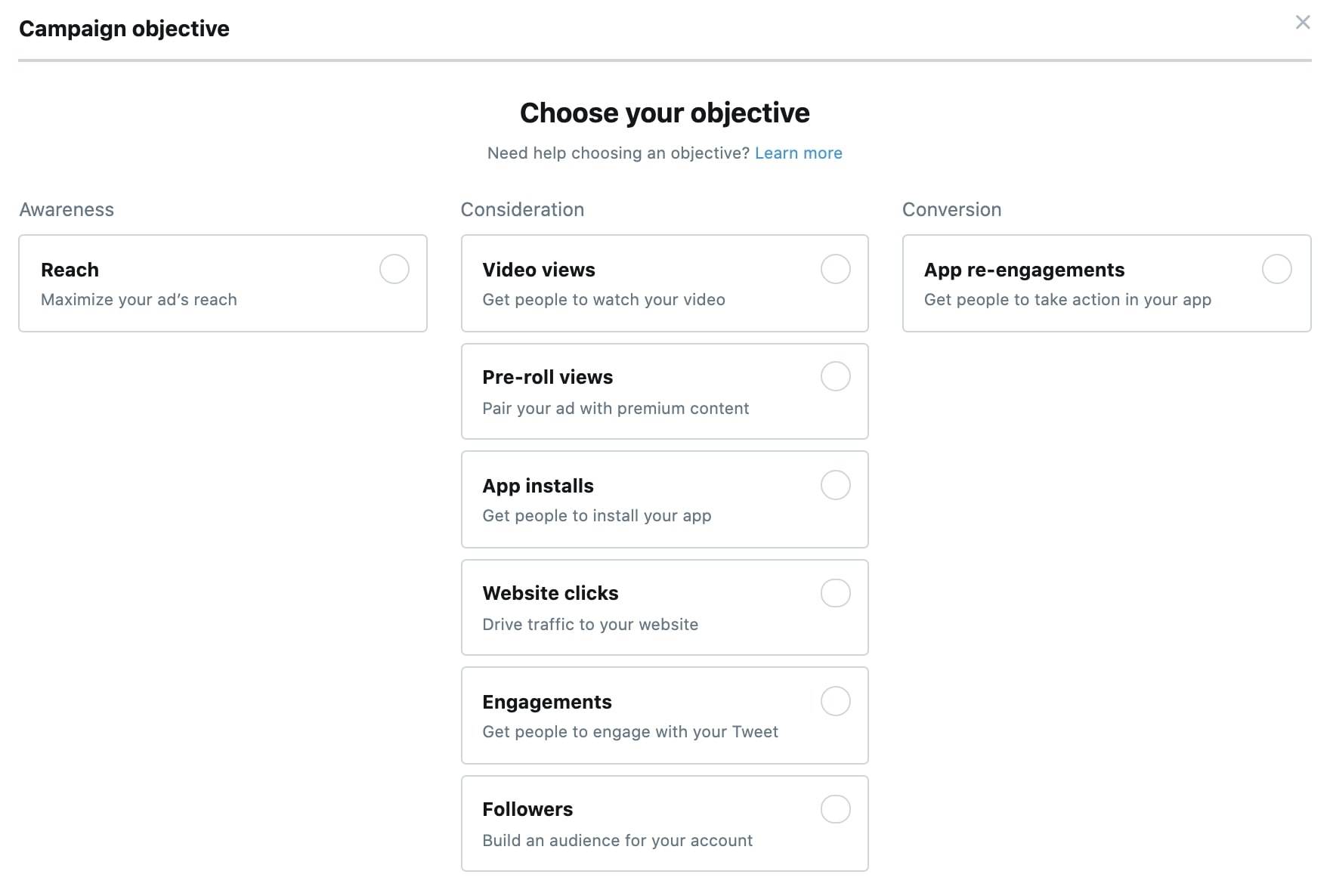
Image Source: Twitter Business
Twitter provides you 8 campaign objectives to choose from:
1. Reach: To promote and increase your tweets reach. Payment is per 1,000 impressions.
2. Video Views: To promote a video ad on Twitter. Payment is per video view.
3. Pre-roll Views: Show your ads on premium content. Payment is per pre-roll view.
4. App Installs: To encourage Twitter audiences to download and use your app. The cost is per app download.
5. Website Clicks: To generate leads on your website through Twitter ads. Payment is per click.
6. Engagements: Your ads are geared towards engaging audiences. An engagement on Twitter refers to a "like," retweet, or reply. Payment is per engagement.
7. Followers: To increase your follower count via targeted ads. Payment is per new follower.
8. App Re-engagements: Target Twitter users who have downloaded your app and persuade them to open it again directly from their timelines.
The objective you choose will affect the actions you are bidding on.
Step 3: Define Your Campaign Details
After you select an objective, input your campaign details that include
- An easily identifiable campaign name (which is visible only to you)
- Daily and total budgets for the entire campaign duration
- The start & end date of the campaign
- The correct funding source
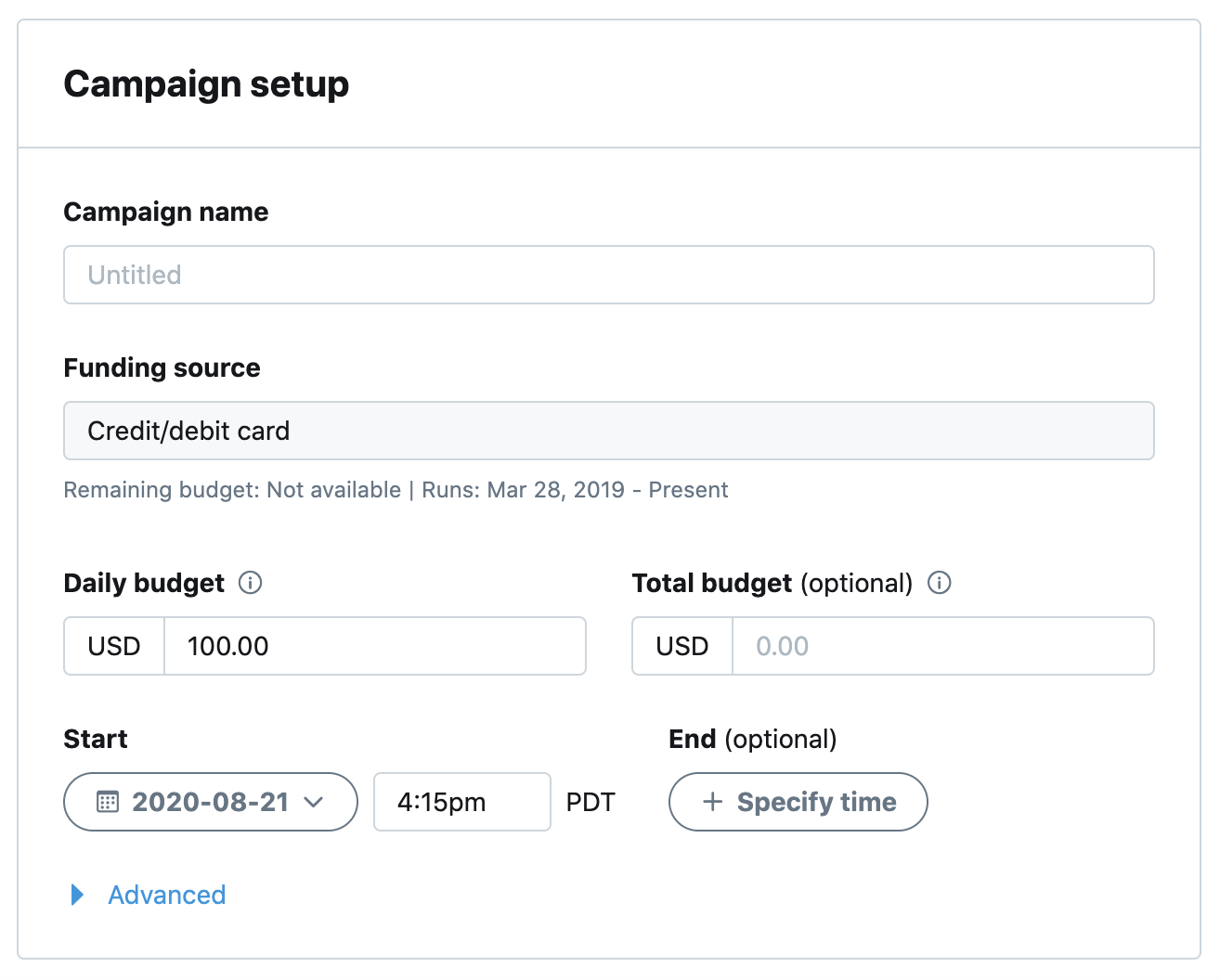
Image Source: Twitter Business
If you click on "Advanced," Twitter will ask you to adjust the pacing of your campaign to either Standard or Accelerated. By default, the pacing is set to Standard, which is also the one that Twitter recommends.
-
Standard: When you choose standard pacing, Twitter spends your ad budget more efficiently, and your ad is served to the audience throughout the day.
-
Accelerated: Twitter shows your ad as often as possible to your audience but for a shorter period of time. This option works best for tight time constraint campaigns.
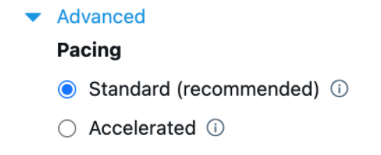
Image Source: Twitter Business
Click "Next" once done.
Step 4: Select Ad Groups & Bid Type
Within a campaign, you can set up and run multiple sub-campaigns or ad groups. Such ad groups also contain their own name, start and end times, and total ad group budget.

Image Source: Twitter Business
Next, you need to choose a bid type amongst the following.
-
Automatic bid: This option will allow Twitter to optimize for the ideal cost per the action you select under "optimization preference" (link clicks or conversions).
-
Maximum bid: This option allows you to set an absolute cap on your bid per link click.
Step 5: Drill-down Targeting
Once you have chosen your campaign objective and created ad groups, it's time to select who you want the ad to be delivered to.
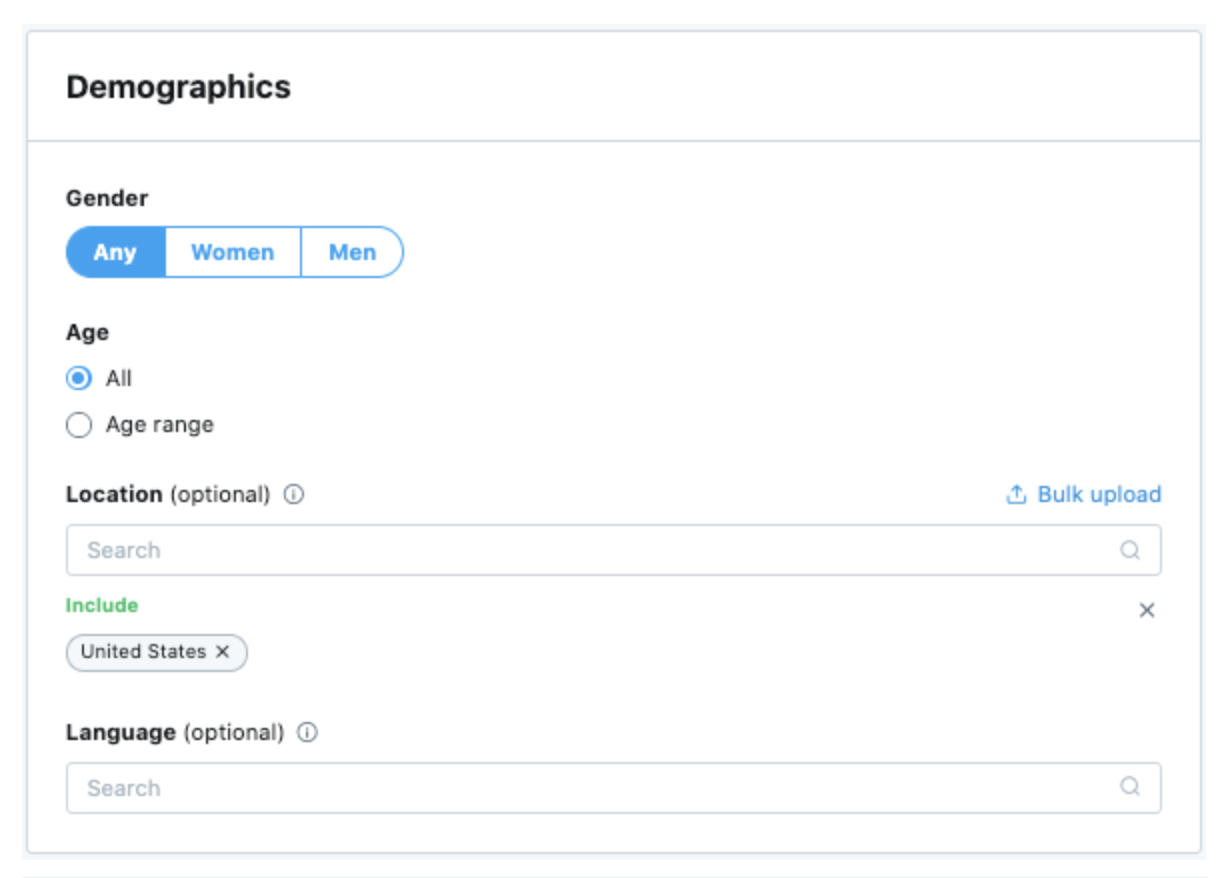
Image Source: Twitter Business
Under the Targeting section, you can select the audience criteria you want to use. Twitter provides the following audience targeting options:
- Gender
- Age (by pre-established age ranges)
- Location (country, state/province, city, or zip code)
- Language
- Device targeting: Operating system, device models, and carriers
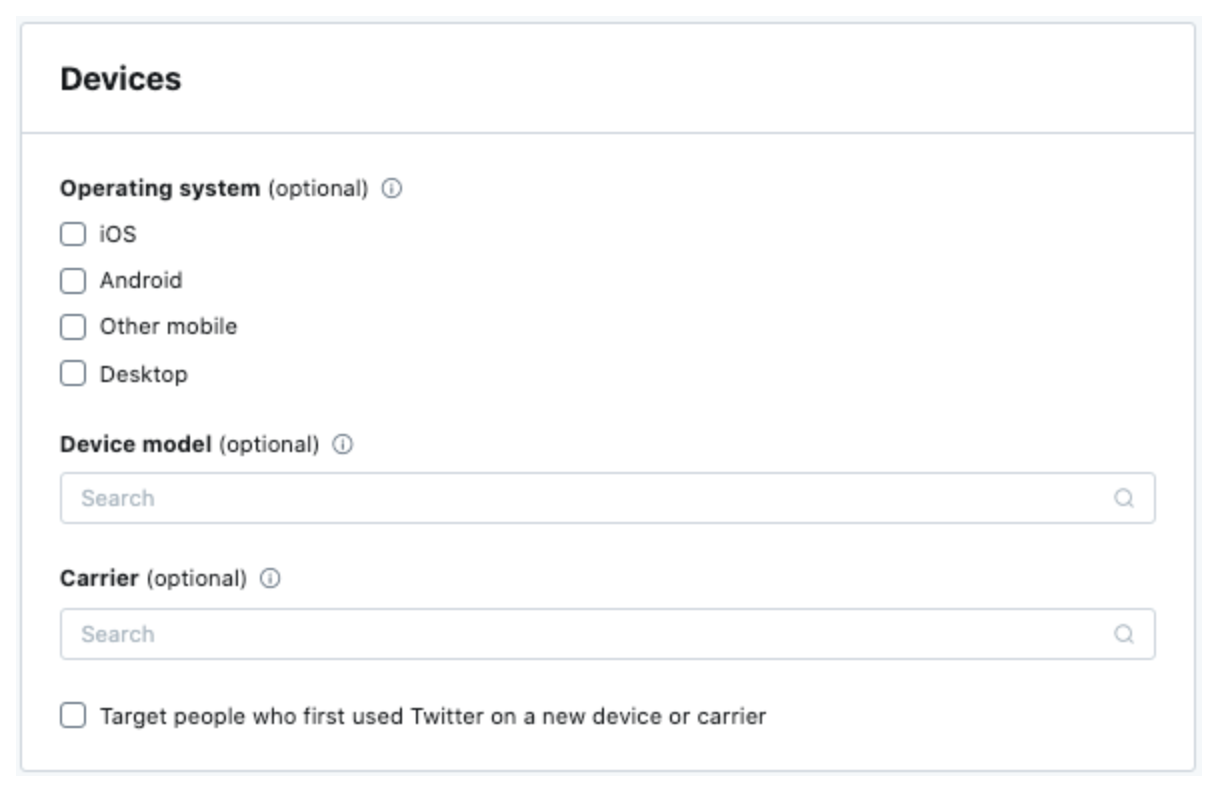
Image Source: Twitter Business
Twitter gives you an option to create custom audiences and then select and create any audience type you would like to use in your campaigns.
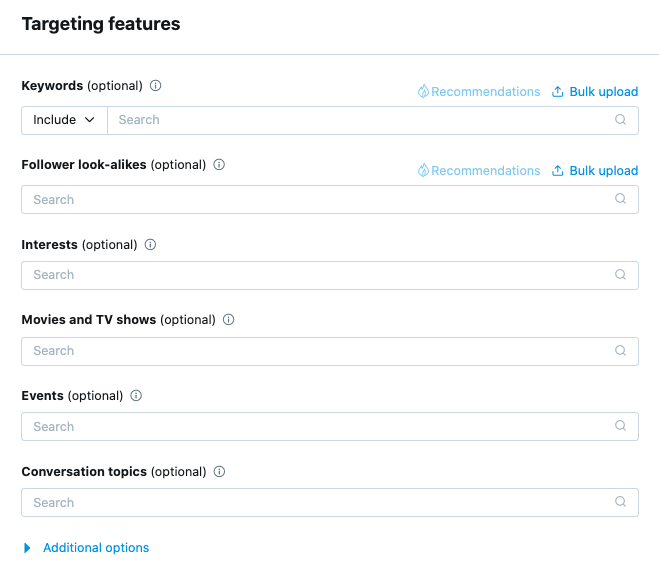
Image Source: Twitter Business
Twitter provides powerful targeting capabilities, which make it easy to find and segment audiences. Twitter offers targeting features that allow you to serve ads based on
-
Keywords: When someone tweets with the keyword you choose, searches for it or engages with a tweet with that keyword, they become part of your target audience.
-
Follower look-alikes: Enter Twitter usernames here, and Twitter will target an audience similar to those users' followers you have entered. You can include your main competitors here and advertise to their followers.
-
Interests: Twitter will serve your ads to Twitter users who have expressed interest in your chosen topics.
-
Movies and TV shows: Target Twitter users who have engaged with the TV shows, networks, or other types of TV content you have selected.
-
Events: Event targeting reaches Twitter users who are interested in global or regional events. You can browse the list of events provided by Twitter and choose the most appropriate one.
-
Conversation topics: Target Twitter audiences based on the conversations they are actively participating in on the platform.
Once you select the targeting category, the estimated audience size will be displayed on the right side of your ad manager dashboard.
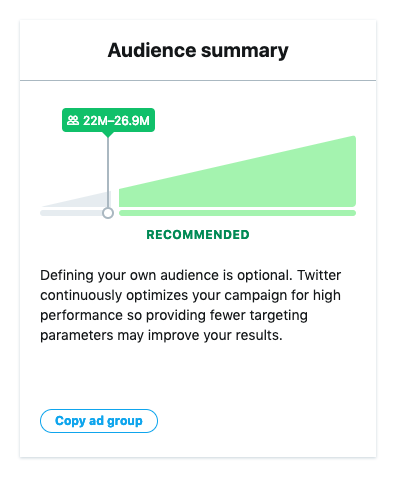
Image Source: Twitter Business
Step 6: Choose Attention-Grabbing Placement For Your Twitter Ads
Now you need to determine the proper placement for your Twitter ad. Ask yourself where it would make sense for your target audience to see the particular ad? Depending on the campaign objective you chose, certain ads can only be placed in specific locations.
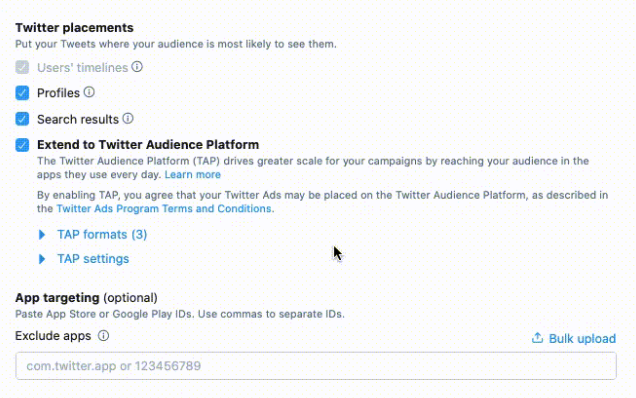
Image Source: Twitter Business
The possible Twitter ad placements include:
- In searches
- In users' feeds
- On profiles
- Tweet detail pages
- Twitter audience platform (a network of mobile apps and websites that Twitter may not own, similar to traditional display advertising)
Note: At the end, two factors determine where your ads appear on your audience's Twitter timeline.
- The objective you select
- The ad placements parameter you choose
Step 7: Consider Your Creative Options
Under the "Creatives" section, you can select and create the ads you would like to run. This screen will depend on the type of campaign you have set up.
You will be asked to either “Compose a tweet” or “Select a tweet.” You can create a brand new promoted-only tweet for your ad, or you can choose to promote existing tweets.
Note: In Twitter, the term "creative" also refers to the tweet that you will feature in your ad in the case of Twitter text ads.
Step 8: Ready, Set, Launch
After your ad creative is in place, click "Next" to move to the campaign review screen. Here you can check the final details that you have entered for the campaign.
If everything looks good to go, click on "Launch" in the upper right to get your Twitter ad campaign off the ground!
You will also get options to save your campaign as a draft or schedule it to launch at a later time.
Step 9: Repeatedly Test & Monitor Your Twitter Ads
Your job isn't done once you hit the "Launch" button. Succeeding with Twitter ads is entirely about testing, measuring, and improving.
After setting up your first Twitter ad, you will be directed to the analyst's screen for that ad. Over time this screen will show data on how many engagements your ad has had, how much you have spent, along with data about who engaged with the tweet.

Image Source: Twitter Business
You can choose specific campaigns to see the performance by ad group and ad level. Use the Audience section to see more specific demographic insights.
After the campaign launch, keep reviewing your results to identify which tactics work best for your brand. Focus on refining and better implementing those tactics in your further campaigns to move you closer and closer to your goals.
Additional Reading: Twitter Shares Tips On How To Improve Twitter Ads Approach
Twitter Ads Example
Get inspired into executing successful Twitter ads using these Twitter ads examples.
Twitter Video Ads Example
Skillshare is an online learning platform that helps people to learn new things from world-class practitioners. Skillshare regularly Tweets video trailers of free classes by industry-rich experts to promote their platforms.
The trailers give people a chance to learn about the course content that will be covered and the course curator. They also provide a link in the Tweet that sends the audience directly to the class landing page, where they are given the option to sign up to take the course instantly.
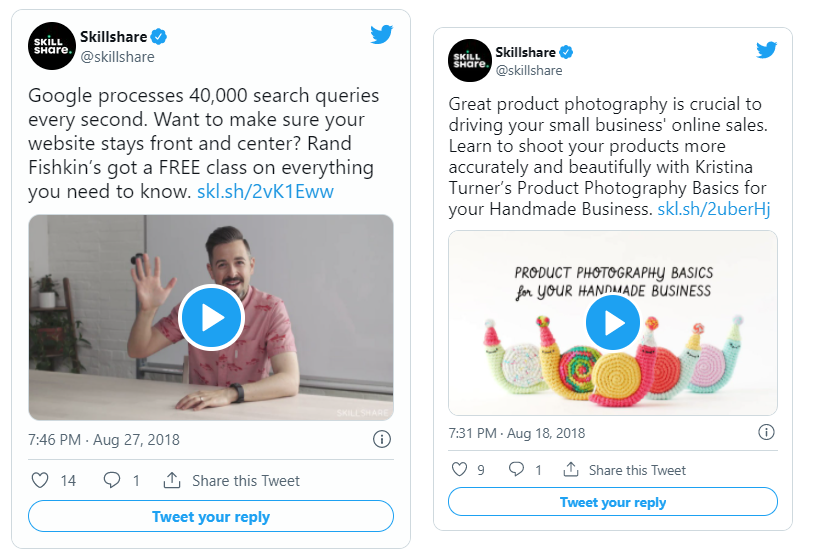
Image Source: Twitter Business
Twitter Carousel Ads Example
goPuff, a delivery app operating in over 500 US cities, was looking for an engaging ad format that could drive app downloads and help them acquire new customers. Twitter carousel ads allowed them to showcase the diversity of products they offer for delivery.
They ran multiple versions of Twitter ad campaigns wherein each ad was specifically geo-targeted to specific markets where they operate.
Delivery is never surged. Always just $1.95.
— Gopuff (@gopuff) June 4, 2020
Get $5 off your first two orders using code TWX.
Twitter Conversational Ad Examples
Samsung Canada was one of the first brands to use Twitter conversational ads globally when Twitter released it.
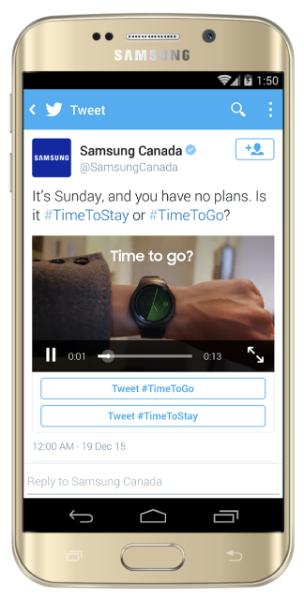
Image Source: Twitter Business
Twitter Advertising Best Practices
-
Focus on what matters the most to your target audience. Know precisely who you are speaking to. Use the messages that speak directly to your audience's needs, wants, fears, and desires.
-
Use high-quality images. Don't make graphics an after-thought. Spend time finding the perfect image/video for your ad as much as you do in crafting creative copy.
-
Use hashtags wisely as they are a great way to enter into conversations. Don't tap into saturated hashtag spaces and create your brand's own hashtags to separate your messaging.
-
Your ads aren't merely about attracting attention but also about getting your audience to take some action. Use a single and clear call-to-action (CTA) that tells users precisely what you want them to do to connect with your brand.
-
If you don't have a core audience to base your campaign upon, create a look-alike audience using the targeting by handles option. Ensure that you are targeting accounts with actual people following them and not bots.
-
You aren't just restricted to promoting a Tweet in ads, but you also get options for creating Twitter cards.
-
A card allows you to add more content. A card features rich media like a headline, link, and sometimes a button. Twitter provides variations of cards, like website, video website, image app, video app, and more.
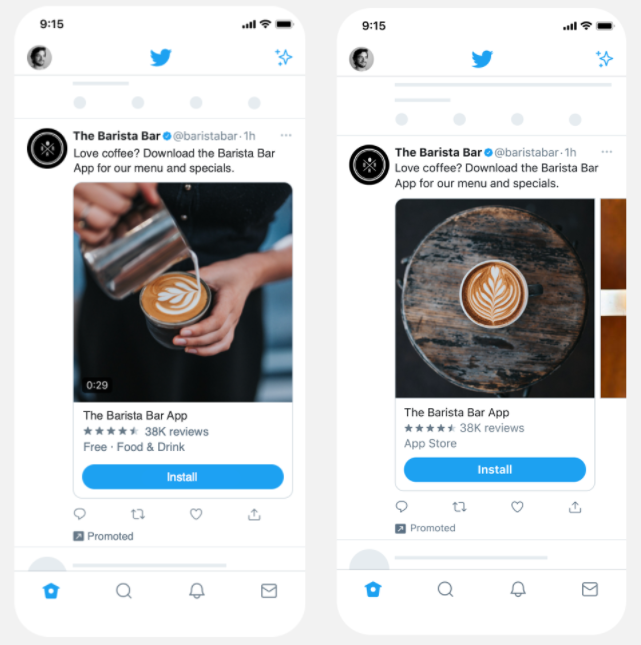
Image Source: Twitter Business
How To Delete Twitter Ad Campaign?
If you no longer need a campaign to run or its data and would rather have the campaign removed from your campaign’s page, you can choose to delete a Twitter ad campaign completely.
Note: Once you delete a Twitter ad campaign, you lose access to analytics or information regarding that campaign.
To delete the Twitter ad campaign using these steps.
Step 1: Go to Twitter Ads Manager.
Step 2: Scroll to the campaign you wish to delete and click on it.
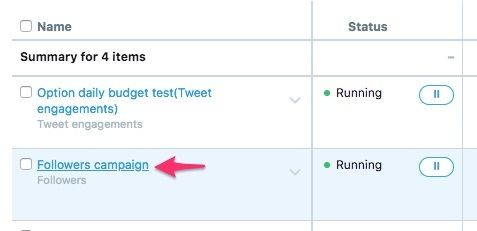
Image Source: Twitter Business
Step 3: Click on "Campaign actions" at the top right side of your dashboard.
Step 4: From the menu opened up, click "Delete campaign."

Image Source: Twitter Business
Step 5: Twitter will ask you for confirmation as this action is irreversible. Click on "Delete" when prompted.
You will then see your campaign with the status "Deleted" in your ads manager. The past spend, impressions, and engagement metrics will still be visible to you; however, the detailed audience metrics might not be accessible.
Ready To Get Tweeting?
59% of B2B companies and 53% of B2C companies leverage Twitter for their marketing campaigns worldwide.
Like any new toy, Twitter ads will take some time to get used to, and the best way to learn how to use them is to simply get started. Now you know everything to get going with Twitter ads, you will find what works for your brand as you go along.
Need help with running a successful Twitter ads campaign? We are here to help.
Statusbrew's Twitter Analytics helps you create presentation-ready customizable reports, track all key metrics such as engagements, impressions, audience growth, post metrics, compare all your Twitter profiles, team performance tracking, and audience's sentimental analysis.
Want to discuss further? Book a free demo or start your free trial today!
Statusbrew is an all-in-one social media management tool that supports Facebook, Instagram, Twitter, Linkedin, YouTube, and even Google My Business.
Infographic

Citation Policy: Please feel free to use these infographics in any commercial or non-commercial capacity. If you use the infographics, we require a reference back to Statusbrew Blog.

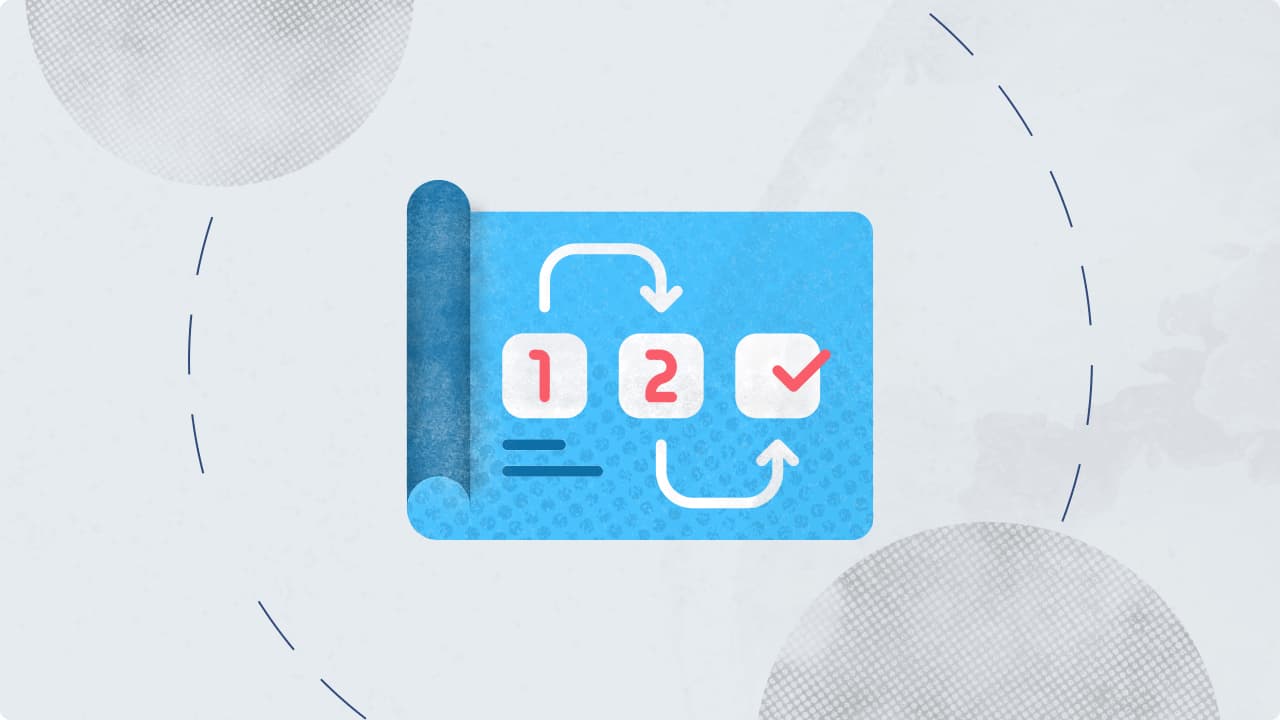

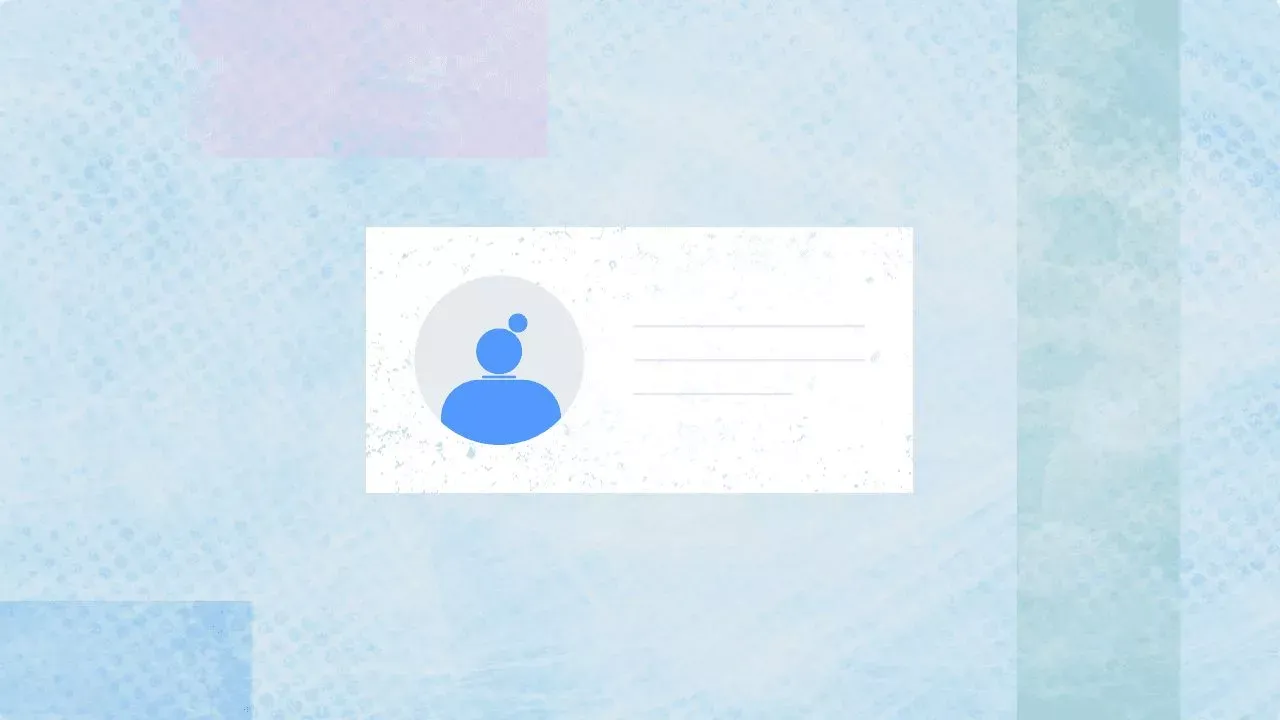
Explore the Statusbrew range of social media tools
Cancel anytime!